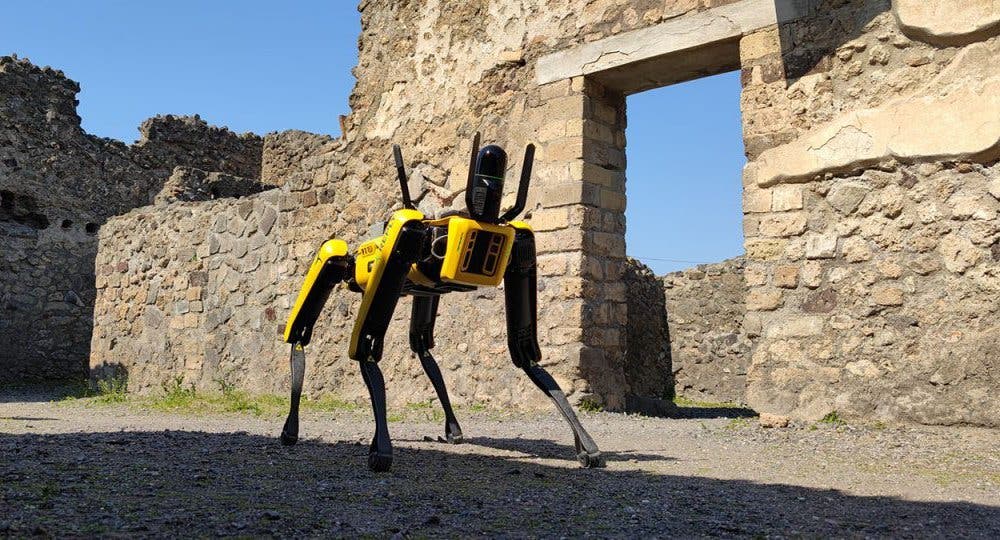It doesn’t do tricks or play fetch, but this robot dog can inspect even the smallest of spaces in complete safety and even gather and record data for study. Meet Spot — a quadruped robot that is currently being used in the ancient, Roman city of Pompeii to collect data on structural and safety issues in the ancient ruins. Oh, and it’s also capable of going underground to inspect tunnels dug by thieves.

The city of Pompeii, located in Naples, Italy, was destroyed in 79 CE after the eruption of a nearby volcano — Mount Vesuvius. The volcano eruption covered the city with at least six meters of ash and other volcanic debris, burying the city for centuries before its ruins were rediscovered in the late 16th century, prompting a massive excavation, and unveiling Pompeii as one of the most important archaeological sites in history.
The archaeological site at Pompeii is unique as it provides a unique glimpse into the economic, social, political, and religious life of the ancient Roman world. It’s also visited by millions of people annually, which brings in a lot of money for research but can also damage the site. In fact, in2008, the Italian government declared a state of emergency at the site, hoping to better preserve the ruins.
For years, archaeologists, residents, and historians have been complaining about the poor upkeep and management of the site. Things were so bad that in November 2010, Schola Armaturarum, a large building once used in Pompeii by gladiators for training, crumbled because of water infiltration. Weeks later, a wall protecting a structure also fell down due to heavy rain.
Now, the managers of Pompeii’s Archaeological Park want to bring in new technologies for preventive conservation – including drones, sensors, satellites, and the robot Spot. This would improve the quality of monitoring of the existing areas and better manage recovery or restoration plans for the ruins at a relatively low cost, they argue.
Adding tech to Pompeii

Spot, the robot now being used in Pompeii, was designed by Boston Dynamic, a company that has built robots such as Atlas – a humanoid robot that can navigate a parkour course. Spot has a 360-degree vision that helps it avoid obstacles, is protected from dust and rain, and can reach speeds up to three mph, according to the company.
“Technological advances in the world of robotics, in the form of artificial intelligence and so-called autonomous systems, have produced solutions and innovations typically associated with the industrial and manufacturing world, but which until now had not found an application within archaeological sites,” Pompeii’s director-general, Gabriel Zuchtriegel, said in a statement.
The robot works side-by-side with a flying laser scanner that can autonomously do 3D scans of the ruins. The data collected will allow researchers to study areas that could collapse if humans access them. Until Spot was introduced, no technology of its kind had been developed for archaeological sites, authorities at Pompeii have argued.
Spot will also be used in underground tunnels made by tomb raiders, who made a fortune by digging their way into the ruins and stealing precious relics to sell to art traffickers. However, the thieves have been less successful since 2012, when the local art police intensified their efforts and were able to catch criminals on the spot.
“Often the safety conditions within the tunnels dug by grave robbers are extremely precarious, as a consequence of which the use of a robot could signify a breakthrough that would allow us to proceed with greater speed and in total safety,” Zuchtriegel said in a statement.


